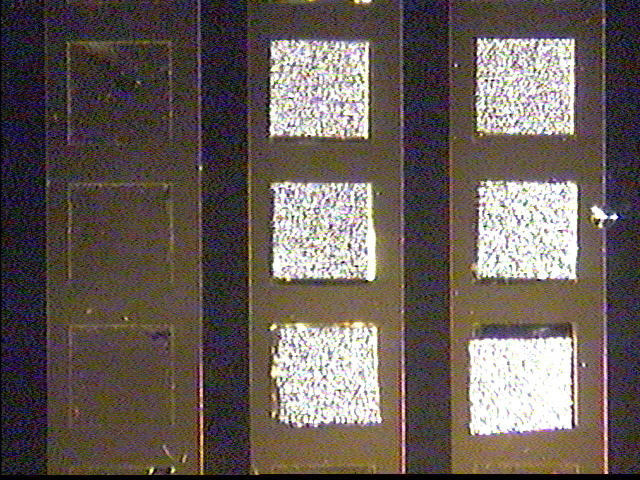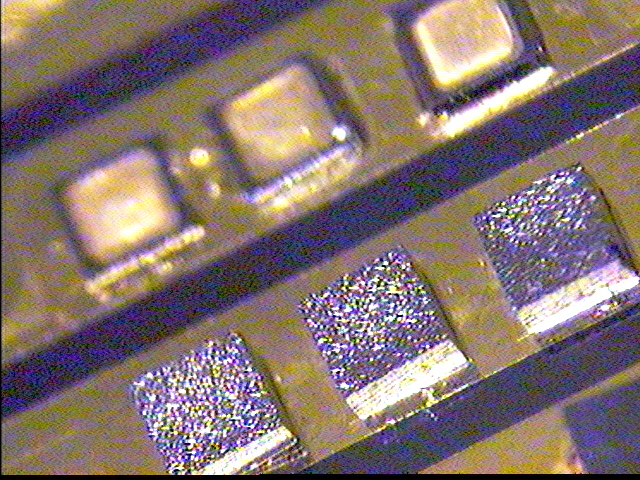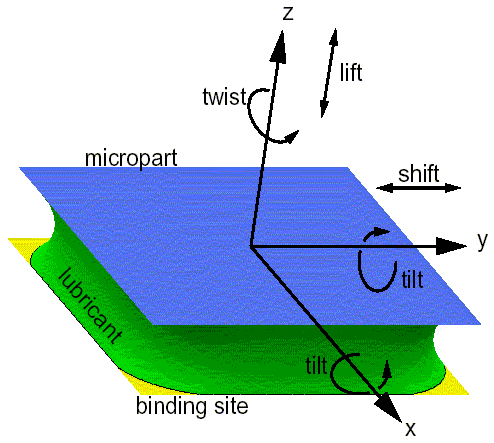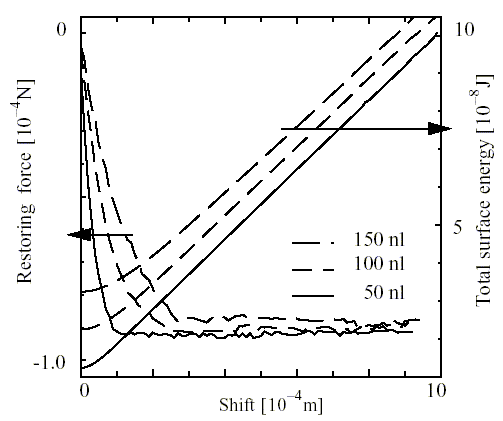Projects Archive
Micro Self Assembly - Controlled Multi-Batch Self-Assembly of Micro Devices
Team Members
Xiaorong Xiong, Yael Hanein, Jiandong Fang, Yanbing Wang, Karl F. Böhringer Weihua Wang, Daniel Schwartz (Chemical Engineering)
Summary
A technique is described for assembly of multiple batches of micro components onto a single substrate. The substrate is prepared with hydrophobic alkanethiol-coated gold binding sites. To perform assembly, a hydrocarbon oil, which is applied to the substrate, wets exclusively the hydrophobic binding sites in water. Micro components are then added to the water, and assembled on the oil-wetted binding sites. Moreover, assembly can be controlled to take place on desired binding sites by using an electrochemical method to deactivate specific substrate binding sites. By repeatedly applying this technique, different batches of micro components can be sequentially assembled to a single substrate. As a post assembly procedure, electroplating is incorporated into the technique to establish electrical connections for assembled components. Important issues presented are: substrate fabrication techniques, electrochemical modulation by using a suitable alkanethiol (dodecanethiol), electroplating of tin and lead alloy and binding site design simulations. Finally, we demonstrate a two-batch assembly of silicon square parts, and establishing electrical connectivity for assembled surface-mount light emitting diodes (LEDs) by electroplating.
 |
 |
Figure 1: Adsorption is done by soaking surfaces in ethanolic alkanethiol solution. |
Figure 2: Reductive desorption of SAMs: |
Videos
Selected Publications
-
Karl F. Böhringer, "Surface Modification and Modulation in Microstructures: Controlling Protein Adsorption, Monolayer Desorption, and Micro-Self-Assembly." IOP Journal of Micromechanics and Microengineering (JMM) 13(4):S1-S10, July 2003. Paper.
-
Xiaorong Xiong, Yael Hanein, Jiandong Fang, Yanbing Wang, Weihua Wang, Daniel T. Schwartz, Karl F. Böhringer, "Controlled Multi-Batch Self-Assembly of Micro Devices." ASME/IEEE Journal of Microelectromechanical Systems 12(2):117-127, April 2003. Paper. Poster from 2002 Gordon Conference.
A complete list of our publications (many of them available online) can be found here.
Acknowledgements
-
NSF Career Award ECS9875367 to K. F. Böhringer
-
Ford Fellowship to X. Xiong.
-
NSF CISE Postdoctoral Research Associateship EIA0072744 to Y. Hanein.
-
NSF Young Investigator Award CTS-9457097 to D. T. Schwartz.
-
Donations from Agilent Technologies, Intel Corporation, Microsoft Research, Tanner Research, Inc., and Technic, Inc.
Micro Self Assembly - Modelling of Capillary Forces in Fluidic Self-Assembly
Team Members
Andreas Greiner, Jan Lienemann, Jan G. Korvink (Universität Freiburg, Germany) Xiaorong Xiong, Yael Hanein, Karl F. Böhringer
Summary
Parallel self-assembly in the fluidic phase is a promising alternative technique to conventional pick-and-place assembly. In this work the hydrophobic-hydrophilic material system between binding sites for microparts is simulated with respect to alignment precision. The results are compared with experimental findings and allow predictions for the optimization of the fluidic self assembly technique. volume.
Selected Publications
-
Andreas Greiner, Jan Lienemann, Jan G. Korvink, Xiaorong Xiong, Yael Hanein, Karl F. Böhringer, "Capillary Forces in Micro-Fluidic Self-Assembly." Fifth International Conference on Modeling and Simulation of Microsystems (MSM'02), pp. 198-201, San Juan, Puerto Rico, USA, April 22-25, 2002. Paper.
A complete list of our publications (many of them available online) can be found here.
Micro Self Assembly - Designing the Binding Sites in Fluidic Self-Assembly
Team Members
Karl F. Böhringer, Uthara Srinivasan, Roger Howe (UC Berkeley)
Summary
Massively parallel self-assembly is emerging as an efficient, low-cost alternative to conventional pick-and-place assembly of microfabricated components. The fluidic self-assembly technique we have developed exploits hydrophobic-hydrophilic surface patterning and capillary forces of an adhesive liquid between binding sites to drive the assembly process. To achieve high alignment yield, the desired assembly configuration must be a (global) energy minimum, while other (local) energy minima corresponding to undesired configurations should be avoided. Thus, the design of an effective fluidic self-assembly system using this technique requires an understanding of the interfacial phenomena involved in capillary forces; improvement of its performance involves the global optimization of design parameters such as binding site shapes and surface chemistry.
This work presents a model and computational tools for the efficient analysis and simulation of fluidic self-assembly. The strong, close range attractive forces that govern our fluidic selfassembly technique are approximated by a purely geometric model, which allows the application of efficient algorithms to predict system behavior. Various binding site designs are analyzed, and the results are compared with experimental observations. For a given binding site design, the model predicts the outcome of the selfassembly process by determining minimum energy configurations and detecting unwanted local minima, thus estimating expected yield. These results can be employed toward the design of more efficient self-assembly systems.
Selected Publications
-
Karl F. Böhringer, Uthara Srinivasan, Roger T. Howe, "Modeling of Fluidic Forces and Binding Sites for Fluidic Self-Assembly." IEEE Conference on Micro Electro Mechanical Systems (MEMS), pp. 369-374, Interlaken, Switzerland, January 21-25, 2001. Paper. Poster. Poster from UW Undergraduate Symposium.
A complete list of our publications (many of them available online) can be found here.
Acknowledgements
-
NSF Career Award ECS9875367 to K. F. Böhringer
-
Berkeley Sensor & Actuator Center
-
Donations from Agilent Technologies, Intel Corporation, Microsoft Research, Tanner Research, Inc., and Technic, Inc.




